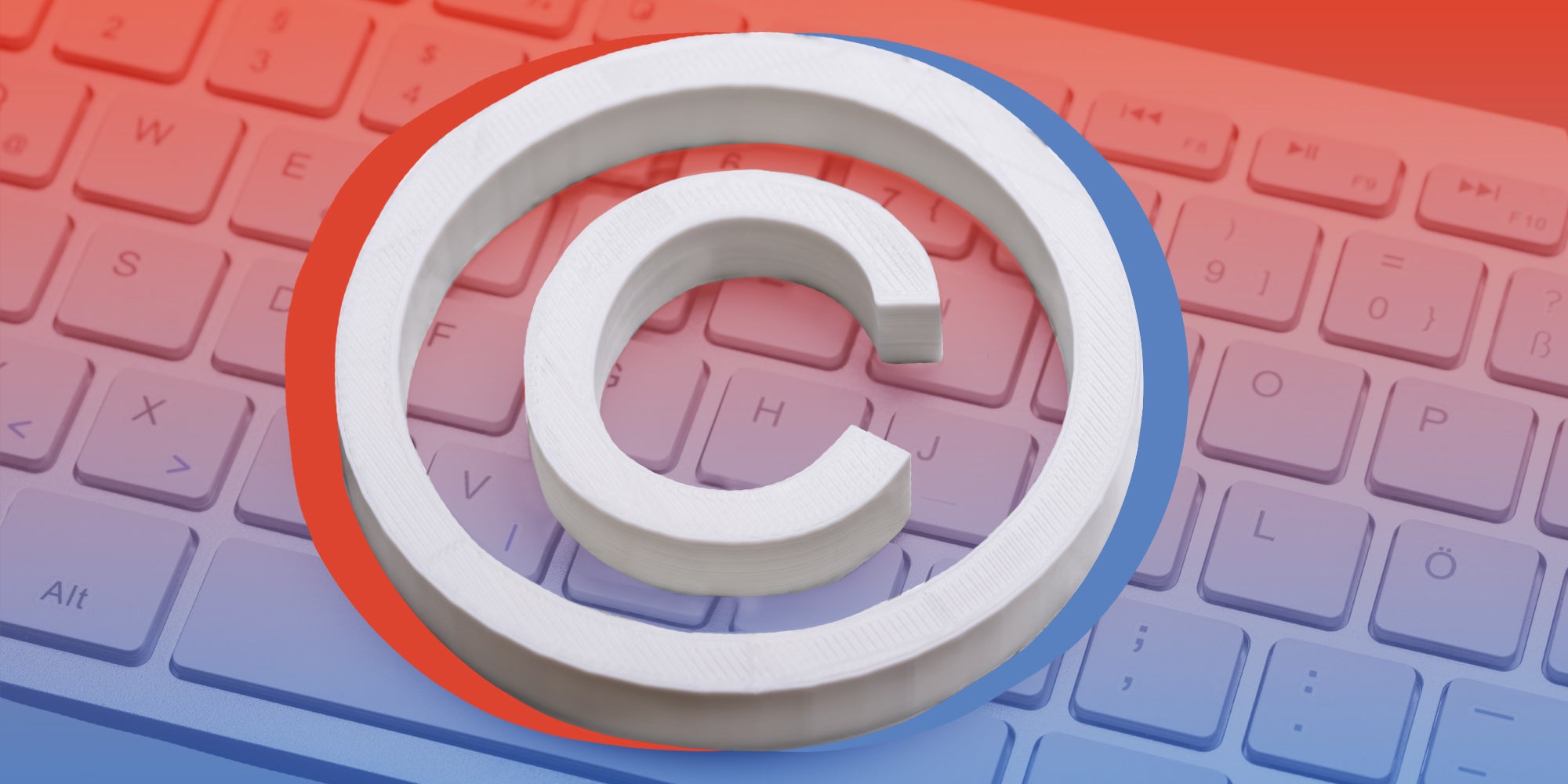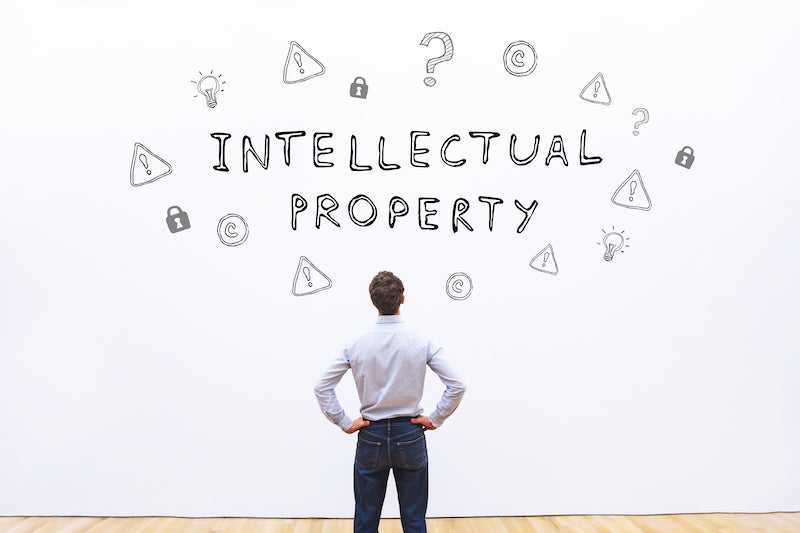
What if we told you, contrary to popular belief, you actually have rights in the things you create on social? Just because something is on a website you don’t own, doesn’t mean the content is yours. If you’ve wanted to understand your intellectual property rights on social media, you’re in luck. Let us walk you through everything you need to know and some best practices for the future.
Why is intellectual property important for social media?
Intellectual property is an area of law that governs what your rights are in the things you create. From that clever podcast name to a viral video, intellectual property law outlines your rights in those creative assets. Intellectual property law is also how you protect those rights.
It’s important for social media.The bread and butter of most creator businesses is essentially licensing out content (protectable under copyright law) or their brand names (protectable under trademark law) to third party businesses. By understanding intellectual property, you will not only be able to protect your work on social media. You’ll also be able to leverage it as a business.
What are the rights of content intellectual property?
Generally, social media content is protectable under copyright law. Copyright law protects all creative works that are fixed in a tangible medium. In the creator space that encompasses practically everything that you create. Whether it’s a static image, short-form video, podcast episode, blog post, or a digital product.
As a copyright owner, you have the right to control where your work is published. You also have the right to create derivative works, repost/repurpose the work, report and seek removal of infringing content, and license or transfer ownership of your work to third parties. And, of course, you have the right to get paid for selling/licensing your work.
Now remember that these *rights* accrue to the people who capture, record, or create these assets. As a creator, you are probably capturing or recording content to publish on social media. Ergo, you are the copyright owner/rightsholder in that content.
Over time, that may change when you add photographers, videographers, and designers into the mix as independent contractors. Technically those folks are the copyright owners of those works/recordings, so it’s important to have contracts that assign or transfer those rights.
Does copyright apply to social media?
It does in more ways than you realize! Let’s clear one point of confusion – you own the content you create and publish on your account—not the platform. Your rights as a copyright owner remain unchanged so long as you are the person creating the content, the captions, etc. Again this article assumes that you created all of these components. If you’re including content created by other people, you don’t have the right to their content.
Make no mistake. Just because platforms don’t own your content on paper doesn’t mean they have zero rights to use your content. I mean, they’re giving you a space to publish for free, so what’s a little give and take, right? I wish it was a little, but it’s not.
Under most, if not all, social platform terms and conditions, most account holders grant social platforms a broad, “perpetual” license to use your content in “any media now known or hereafter devised.”
Essentially, social platforms won’t be able to claim that they own your content. However, under their terms and conditions, they have a lot of flexibility around how they can use it (which comes VERY close to acting like an owner). Most of the language around the social platform’s rights in your content can be found in the intellectual property section.
Content Creation Doesn’t Exist in a Vacuum
However, content creation and copyright considerations don’t occur in a vacuum anymore. Gone are the days of a well-executed photo and witty caption. These days, content creation is a whole experience, incorporating other people’s intellectual property to put your own spin on a trend, become the next viral sensation, or make this a full-time gig.
Think original sound bites, popular music, imagery, and filters. Long form creators and podcasters have intro or outro music. Short form creators use trending music or choreography.
Streamers are creating engaging environments for subs to interact with them. The list goes on. Altogether this piece of content is no longer just your own, but an amalgamation of other people’s intellectual property.
Also keep in mind that access to incorporate certain features (such as trending music) doesn’t equate to ownership or that you can use them however you see fit. Generally, most platforms give you limited permission to use its features (aka a license) for personal use only.
It’s important to understand the boundaries around what you can do with what’s available to use, how it works in tandem with creating organic versus paid content, the extent of the use (does fair use apply?) and not getting in the crosshairs of a copyright owner like Bang and Elon have.

How do I protect my IP on social media?
As I mentioned above, you can’t protect things you don’t own. None of the below methods will apply if you’re not clear on that (likely because someone else had a hand in creating content). When there is no clear understanding of who owns what, then it only makes sense to have a contract that outlines that. Otherwise, the default will typically be the person who creates the content has the rights to protect and enforce their rights in that work.
Third Parties
Copyright owners can also control how their work is being utilized by third parties (usually brands) using contracts. Creators usually work out a licensing arrangement in brand deals within the rights and usage portions. This allows copyright owners to define the scope and duration a third party (usually a brand) can use your content.
Cease and Desist
Copyright owners can send a cease and desist letter. A cease and desist letter is helpful when dealing with an uncooperative infringer, the infringement is happening offline (think billboards, magazine ads), or to scorch the earth with a formerly beloved brand. The objective of this letter is to serve as a notice to the other side of their wrongdoing. In this case taking your work without your permission.
Cease and desit letters call out potential legal claims, demand to have the infringing content taken down immediately, and sometimes include a demand to get paid.
DMCA Complaints
Copyright owners can report instances of infringement through DMCA copyright complaint forms.
In the U.S., there is a federal law (the Digital Millennium Copyright Act (DMCA)) that requires certain online services, platforms, and websites to have a reporting mechanism in place for people to report instances of copyright infringement. This protects them from having to get in the middle of nasty copyright infringement lawsuits.
This allows copyright owners to get their content taken down immediately without having to confront the person or company that stole their work. Copyright owners must provide information to the applicable platform relevant information to establish they own the content and where the infringement occurred. You do not need to have a copyright registration to file a complaint.
The caveat though is that the other side (the infringer) can respond if they have a valid defense for sharing the work without asking permission (through a counter notice). Once a platform receives a counter-notice, that triggers a countdown to file a lawsuit (aka statute of limitations). If a copyright owner doesn’t file a lawsuit within 14 days from receiving that counternotice, then the relevant platform or website can put the content back up.
Register Your Content With The Copyright Office
Copyright owners can *enhance* their rights as copyright owners, by registering their content with the copyright office. What this does is that it allows copyright owners in the U.S. to sue in federal court, collect statutory damages (up to $30,000 per violation), plus attorney’s fees (if they succeed in court) for infringement.
Generally, these *enhancements* provide a lot of leverage and incentive for infringers to settle. Although the filing fees are relatively low, keep in mind the statutory requirements and be strategic about what you want to register. For example, you might have a course that delivers a lot of value or a viral video you can anticipate people ripping off.
If you have questions, consult an attorney to help develop a strategy.
Watermark Your Content
Once you’re set on ownership, try adding a watermark in your content. Some creators place the watermark in an area that is hard to remove without compromising the quality of the content. They also serve as source identifiers if a thief fails to remove it. In other instances, some creators include a copyright notice in their caption, in the footer of their website.
What is the role of intellectual property in media?
The media eco-system cannot exist without referencing, quoting, or incorporating someone else’s copyright. To promote sharing information and keeping the public aware of the latest happenings, the law does afford some leniency around a journalist’s use of other people’s copyright.
Enter the fair use defense. Without it, there might be some more gatekeeping that would prevent journalists from uncovering newsworthy info. However, this defense does not exempt all uses of copyrighted material in journalism.
This is a multi-factor test that considers 4 factors: (i) the purpose and character of the use; (ii) the nature of the copyrighted work; (iii) the amount and substantiality of the work used; and (iv) the effects of the use upon the work’s potential market value or actual value.
While not a single a factor is outcome determinative, I’ll have to close out with it “just depends” on the situation.




